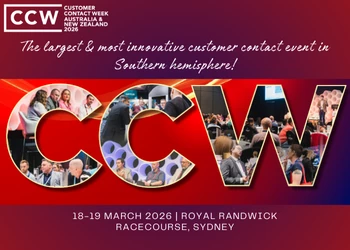Contact Center Agent Performance: 5 Most (and Least) Important Factors
Add bookmark
The following is an excerpt from Call Center IQ's 2015 Executive Report on Contact Center Performance and Operations. Driven by market research and enhanced by analysis from our panel of experts, the report will be made available - at no cost - to Call Center IQ members in the next few days.
When evaluating internal operations, contact center professionals place immense importance on agent empowerment. When evaluating customer interactions, contact center professionals place immense importance on agent performance during the conversation.
People, clearly, represent the key to contact center success.
A resonant contact center strategy will therefore work to monitor, measure, analyze and improve the impact of the agents. It will assure agents have the tools and training they need. It will then assure agents are using those tools and training to forge meaningful bonds with customers.
The Right Kind of Agent
Every customer is different, and all customers are important. To succeed, a contact center agent, consequently, must excel in a variety of different areas.
But just as there are factors that matter particularly greatly to operational efficacy and interaction quality, there are certain elements of agent performance that carry particularly substantial weight. Agents who excel in such areas are the agents who contribute most notably in the contact center’s pursuit of its key objectives.
Those agents are the ones who are demonstrate consistency when offering support and information (4.30/5), possess product and process knowledge (4.13), offer accurate information (4.11), communicate with friendliness (4.06) and personalize calls (3.95).
Consistency, agent knowledge and accuracy tie into the central theme of communicating the right information or resolution on every call. Before worrying about the manner or forum in which they engage customers, businesses most notably care about what they are saying within those interactions. In accordance with that focus, agents must possess knowledge and be able to consistently communicate that accurate information.
Once they establish that framework, agents’ next directive is to integrate a friendly, personalized demeanor into the call. They do not necessarily need to know everything about the customer’s past, but they must be able to engage customers on a human level.
Comparatively unimportant to agent performance are cross-channel competency (2.85), the ability to turn calls into revenue opportunities (2.87), the ability to minimize resolution costs (2.91), success in analyzing customer data (3.04) and the number of calls handled per day (3.06).
None is ranked at a surprising or contradictory position on the hierarchy.
Businesses do not identify channel capability as a top driver of contact center success. Moreover, the organizations that do highly value omni-channel communication do not necessarily believe individual agents need to support customers across multiple channels. Cross-channel competency aligns with the omni-channel revolution and thus has relevance in the contemporary contact center environment, but it is not necessarily a pivotal driver of agent performance.
Since businesses value objectives like customer satisfaction and loyalty more greatly than they do cost reduction and revenue creation, they naturally opt not to ascribe paramount importance to an agent’s cost-cutting or revenue-driving abilities. Personalization matters, but businesses do not believe historical data plays a critical role in that personalization. Contact centers do not place speed or volume management at the top of the totem pole; placing an agent’s call count at the top of a performance assessment would be contradictory.
Call Center IQ's Executive Report on Contact Center Performance and Operations will arrive in the next few days. In the meantime, check out an infographic that uses research from the report to identify the five most important elements of the contact center.





















